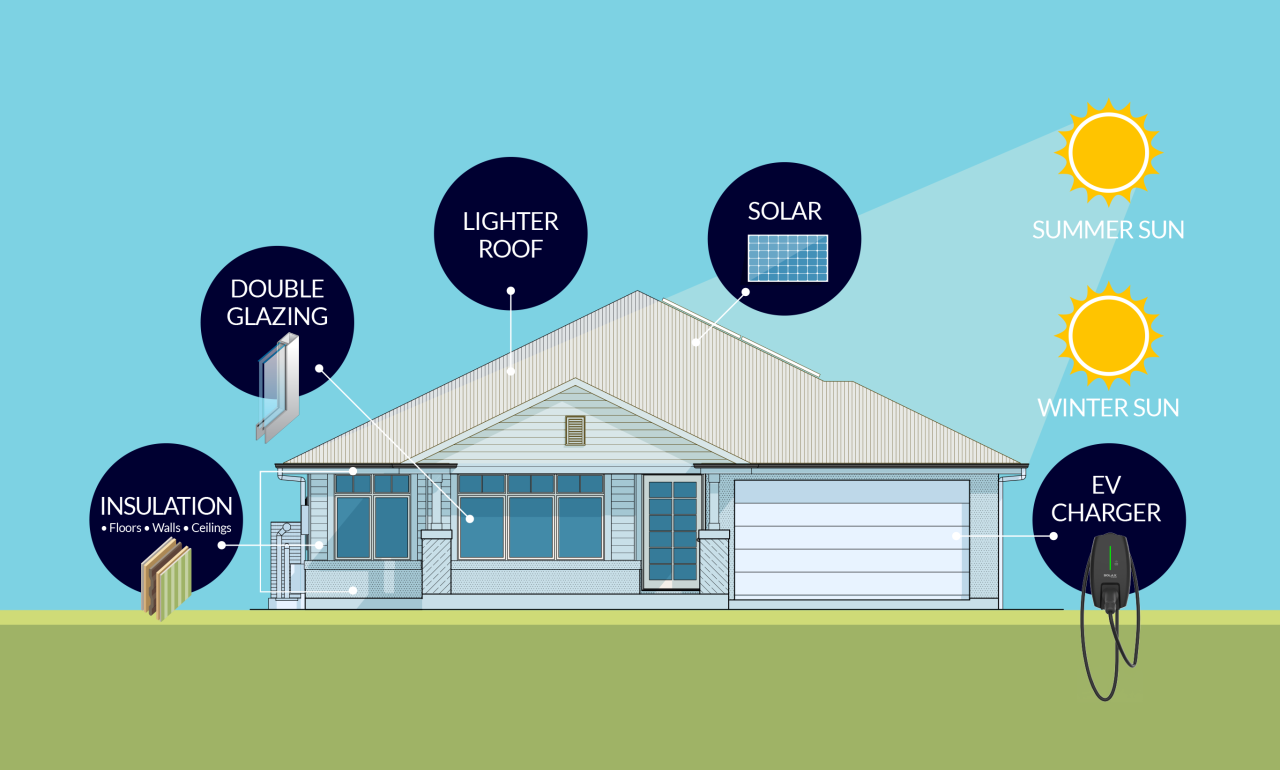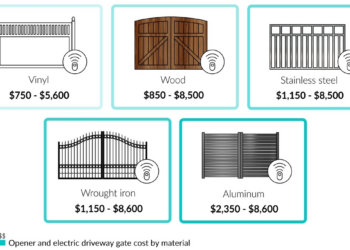Embark on a journey to discover the world of energy-efficient home exteriors. From sustainable materials to innovative technologies, this guide will provide you with all the essential information you need to create an eco-friendly and cost-effective exterior for your home.

Importance of Energy-Efficient Home Exteriors
Energy-efficient home exteriors play a crucial role in reducing energy consumption, cutting down utility bills, and promoting sustainability. By optimizing the efficiency of a home's exterior, homeowners can enjoy a comfortable living space while minimizing their environmental impact.
Benefits of Energy-Efficient Home Exteriors
- Improved Insulation: Energy-efficient exteriors are designed to provide better insulation, keeping the indoor temperature stable and reducing the need for heating or cooling.
- Lower Energy Bills: With reduced energy consumption, homeowners can expect significant savings on their utility bills over time.
- Environmental Sustainability: Energy-efficient homes contribute to a greener environment by reducing carbon emissions and overall energy usage.
- Enhanced Comfort: Proper insulation and energy-efficient features create a more comfortable living environment by maintaining consistent temperatures and reducing drafts.
Key Features of Energy-Efficient Home Exteriors
- High-Quality Insulation: Effective insulation materials and techniques are essential for retaining heat in winter and keeping cool air in during summer.
- Energy-Efficient Windows and Doors: Installing windows and doors with double or triple glazing, low-emissivity coatings, and proper seals can prevent heat loss and drafts.
- Solar Panels: Utilizing solar panels on the exterior of a home can generate clean, renewable energy and reduce reliance on traditional power sources.
- Reflective Roofing: Reflective roofing materials can help reduce heat absorption, lowering cooling costs during hot weather.
Contribution to Sustainability
Energy-efficient home exteriors play a vital role in promoting sustainability by reducing energy consumption, minimizing carbon footprints, and decreasing the overall environmental impact of residential properties. By investing in energy-efficient features and practices, homeowners can contribute to a more eco-friendly future and help combat climate change.
Materials for Energy-Efficient Home Exteriors
When it comes to creating energy-efficient home exteriors, choosing the right materials is crucial. Eco-friendly materials not only help reduce energy consumption but also contribute to a healthier environment. Let's explore some of the top materials suitable for energy-efficient exteriors and compare their efficiency, durability, and maintenance requirements.
Insulated Siding
Insulated siding is a popular choice for energy-efficient home exteriors. It helps improve the insulation of the home, reducing heat loss during the winter and heat gain during the summer. This can lead to lower energy bills and a more comfortable indoor environment.
Insulated siding is also durable and requires minimal maintenance, making it a cost-effective option in the long run.
Low-E Windows
Low-emissivity (Low-E) windows are another key component of energy-efficient home exteriors. These windows have a special coating that reflects heat while still allowing light to enter the home. This helps regulate indoor temperatures and reduce the need for heating and cooling systems, ultimately saving energy.
Low-E windows are also known for their durability and low maintenance requirements, making them a sustainable choice for homeowners.
Recycled Materials
Using recycled materials for home exteriors is not only environmentally friendly but also energy-efficient. Recycled materials like reclaimed wood, recycled steel, and recycled plastic can reduce the carbon footprint of a home construction project. These materials often have good insulation properties and can contribute to energy savings over time
.
While the initial cost may be higher, the long-term benefits in terms of energy efficiency and sustainability make recycled materials a worthwhile investment.
Fiber Cement Siding
Fiber cement siding is a durable and energy-efficient option for home exteriors. It is resistant to rot, fire, and pests, making it a low-maintenance choice for homeowners. Fiber cement siding also provides good insulation, helping to regulate indoor temperatures and reduce energy consumption.
While the initial cost of fiber cement siding may be higher than other materials, its long lifespan and energy-saving properties make it a cost-effective choice in the long term.
Design Elements for Energy Efficiency
Landscaping plays a crucial role in enhancing the energy efficiency of a home. By strategically planting trees and shrubs, you can provide shade during hot summer months, reducing the need for air conditioning. Additionally, proper landscaping can act as a windbreak in colder seasons, helping to lower heating costs.
Importance of Proper Insulation
Proper insulation is key to maintaining energy efficiency in a home. Insulation helps to regulate indoor temperatures, reducing the workload on heating and cooling systems. By ensuring that walls, floors, and attics are properly insulated, you can significantly decrease energy consumption and improve overall comfort levels.
Role of Windows, Doors, and Roofing
Windows, doors, and roofing materials are crucial components in energy-efficient home exteriors. Energy-efficient windows with double or triple panes and low-E coatings help to minimize heat transfer, keeping indoor temperatures stable. Well-insulated doors and roofing materials also play a vital role in preventing energy loss and maintaining a comfortable indoor environment.
Technologies for Energy-Efficient Home Exteriors
Smart Home Technologies:Smart home technologies play a crucial role in enhancing energy efficiency in home exteriors. These technologies include programmable thermostats, smart lighting systems, and energy monitoring devices. By automating and optimizing energy usage, smart home technologies help reduce overall energy consumption and lower utility bills.
Solar Panels Integration
Solar panels are a sustainable and renewable energy source that can be seamlessly integrated into the design of a home exterior. By harnessing the power of the sun, solar panels generate electricity to power home appliances and reduce reliance on traditional energy sources.
When strategically placed on rooftops or walls, solar panels not only enhance energy efficiency but also contribute to environmental conservation.
Energy-Efficient Appliances Impact
Energy-efficient appliances are designed to consume less energy while performing the same tasks as standard appliances. When installed in a home, these appliances significantly reduce overall energy consumption, leading to lower electricity bills and a smaller carbon footprint. With advanced features such as energy-saving modes and improved insulation, energy-efficient appliances play a vital role in enhancing the energy efficiency of a home exterior.
Last Word
In conclusion, energy-efficient home exteriors not only help you save on energy costs but also contribute to a greener environment. By incorporating the right materials, design elements, and technologies, you can transform your home into a sustainable and efficient living space.
Start your journey towards a more energy-efficient home today!
FAQ Insights
What are the benefits of energy-efficient home exteriors?
Energy-efficient home exteriors help reduce energy consumption, lower utility bills, and create a more comfortable living environment.
Which eco-friendly materials are suitable for energy-efficient exteriors?
Eco-friendly materials such as recycled wood, fiber cement siding, and insulated glass are great options for energy-efficient home exteriors.
How can landscaping contribute to energy efficiency?
Strategic landscaping can provide shade, reduce heat gain, and improve insulation, thus enhancing the overall energy efficiency of a home.
What smart home technologies can enhance energy efficiency?
Smart thermostats, energy monitoring systems, and automated lighting controls are examples of technologies that can improve energy efficiency in homes.
How do solar panels integrate into the design of a home exterior?
Solar panels can be installed on roofs or as part of the facade to harness solar energy and reduce reliance on traditional power sources.













